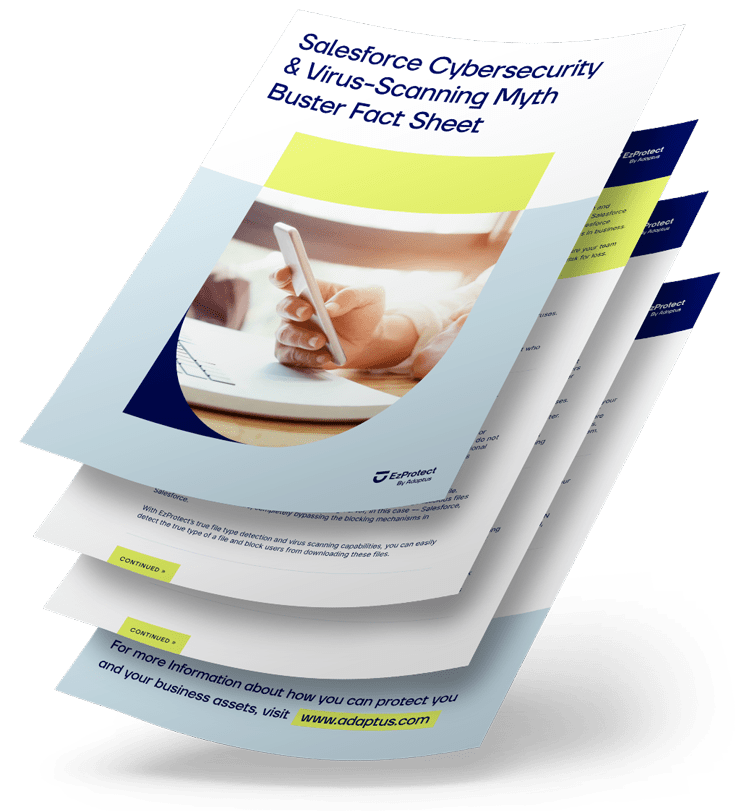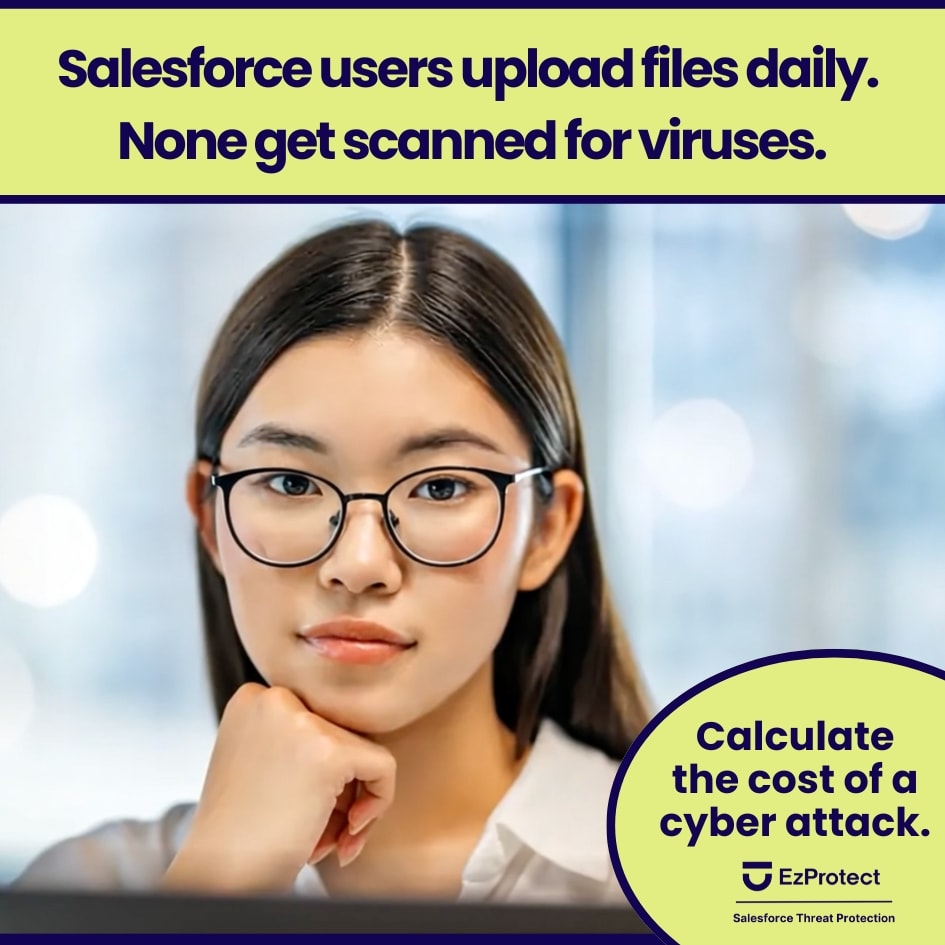Share
Have you considered how much your lack of focus on cybersecurity could actually cost your company and your career?
23andMe filed for bankruptcy in March 2025, wiping out $6 billion in shareholder value in less than two years. The genetic testing giant, once trusted by 14 million customers with their most intimate data, became a cautionary tale of how cybersecurity failures can literally kill a company. The culprit? A preventable data breach that costs the company $30 million in settlements, $3.1 million in regulatory fines, and ultimately, its entire business.
The hackers didn’t need sophisticated tools—they simply used recycled passwords from other breaches to access accounts that lacked basic multi-factor authentication. Perhaps most concerning for enterprise leaders: Salesforce Digital Experiences platforms don’t scan uploaded files for viruses, creating similar attack vectors that could trigger the same catastrophic financial consequences.
With cybercrime costs projected to reach $10.5 trillion annually by 2025 and global data breach costs hitting a record $4.88 million per incident, the question isn’t whether you can afford robust cybersecurity—it’s whether your career can survive without it.
How Cybersecurity Delays Bankrupted 23andMe and Threaten CISO Careers
The 23andMe bankruptcy should terrify every technology executive presenting to their board. In 2023, hackers used credential-stuffing attacks to access approximately 14,000 accounts, representing just 0.1% of total users. Yet due to the company’s interconnected data-sharing features, this small breach exposed personal data belonging to 6.9 million people—including relatives who never used the service. This “network effect” multiplies your risk exponentially in today’s connected enterprise environments.
Here’s the kicker: the UK’s Information Commissioner’s Office found that 23andMe had “unsatisfactory authentication measures”, including lack of mandatory MFA and unsecure password requirements—basic security failures that any competent IT intern could have prevented. These seemingly minor oversights triggered a financial avalanche that ultimately led to the company’s 2025 bankruptcy filing. The 23andMe CISO’s LinkedIn now shows “Former” in the title—a sobering reminder that cybersecurity failures often end careers before they end companies.
IBM’s 2024 Cost of a Data Breach Report reveals that global average breach costs increased 10% to $4.88 million—but this doesn’t include the 18-month compliance audit marathon, executive search costs for replacement leadership, or the “reputation tax” that increases all future vendor costs by 15-30%. Healthcare organizations face the highest costs at $9.77 million per breach, while financial services companies incur $6.08 million.
Beyond direct costs, organizations lose between 7% and 50% of their customer base after breaches. For enterprises with 100,000 customers, that’s potentially losing 50,000 clients overnight—making customer acquisition costs your new nightmare when you’re already bleeding money from breach response.
The True Cost of Waiting (and Your Career Survival)
For CISOs and CTOs, cybersecurity failures represent more than business risk—they’re career annihilation risk. Recent surveys show 73% of CISOs expect to be fired within 12 months of a major breach, regardless of whether they were responsible for the original vulnerability. When cybersecurity failures make headlines, boards don’t just replace strategies; they replace executives.
Organizations faced severe staffing shortages (26% increase from the prior year) and observed an average of $1.76 million in higher breach costs than those with adequate security staffing. With 3.5 million unfilled cybersecurity jobs globally, extended evaluation periods compound the crisis while your organization sits exposed.
Here’s a sobering reality: recently, EzProtect welcomed a customer who had previously chosen our competitor for their Salesforce security needs. During our initial scan, we discovered 298 viruses that had been sitting undetected in their system. Each virus could carry polymorphic malware—sophisticated threats that change signatures every time they’re downloaded, making traditional scanning obsolete. Their previous solution had missed nearly 300 potential company-killers because attackers now use GenAI to create undetectable threats.
The hidden danger? Cyber insurance increasingly denies claims for “known vulnerabilities.” If your Salesforce environment lacks virus scanning and you’ve been warned about it, insurers may deny coverage entirely, making your risk exposure potentially unlimited.
The Salesforce Security Blind Spot Putting Enterprise Data at Risk
The Salesforce Security Blind Spot Putting Enterprise Data at RiskEnterprise organizations leveraging Salesforce face a critical vulnerability that exemplifies vendor-controlled security risk. Salesforce does not offer users protection from scanning attachments, files, or document uploads for malicious content—not by accident, but by design. This creates vendor dependency where Salesforce controls your security roadmap, not you.
Organizations using Salesforce Digital Experiences face acute risk where external users can upload files without any native virus scanning. Organizations cannot enforce what browser users deploy or what security controls they have, creating open attack vectors.
Industry analysis shows the average enterprise has 47% more security vulnerabilities than their CISOs report to boards. A survey of nearly 300 companies using Salesforce revealed that the majority cannot confirm the absence of security incidents within the past year—a visibility gap that could hide the next 23andMe-scale disaster.
The ROI of Not Getting Fired
Technology executives can present compelling career-preservation calculations based on quantifiable breach cost reductions. Organizations that applied AI and automation to security prevention saved an average of $2.22 million over those that didn’t deploy these technologies.
Internal breach detection shortened data breach lifecycles by 61 days and saved organizations nearly $1 million compared to those disclosed by attackers. Organizations with incident response teams that regularly test their plans had average breach costs of $3.26 million, 58% lower than the $5.29 million cost for those without tested response plans.
Combined security investments in AI automation, incident response capabilities, and comprehensive protection platforms can deliver over $4 million in avoided costs per prevented breach—plus the invaluable benefit of keeping your job.
Stop Gambling with Your Company’s Future (and Yours)
The 23andMe bankruptcy proves that cybersecurity failures can terminate businesses regardless of market position or previous success. A company with 14 million customers and $6 billion in market value was destroyed by preventable security failures that any competent cybersecurity program would have stopped.
If your organization uses Salesforce Digital Experiences, you’re potentially operating with the same type of vulnerability that bankrupted 23andMe. Uploaded files are not automatically scanned for viruses, creating open pathways for polymorphic malware, AI-generated phishing attacks, and ransomware to infiltrate your organization.
This vulnerability puts you at risk for the same cascading consequences: costly data breaches averaging $4.88 million, customer trust erosion leading to 7-50% customer loss, legal fees averaging $1-2.3 million, regulatory fines reaching 4% of annual revenue, and compliance audits across multiple frameworks that can cost more than the original breach.
Don’t wait for a security incident to expose your vulnerabilities. Remember our customer with 298 undetected viruses? Each one represented evolved threats that traditional security missed. Every day without proper protection is another day of gambling with your company’s financial stability, customer trust, board confidence—and your career.
Get Your Salesforce Security Assessment
Is your Salesforce environment exposing your organization to the same risks that bankrupted 23andMe? Our confidential security assessment specifically identifies vulnerabilities in Salesforce Digital Experiences and file upload processes that could lead to costly data breaches.
Get your free, confidential Salesforce security assessment to:
- Discover undetected polymorphic malware in your Salesforce files
- Identify potential attack vectors in your Digital Experiences
- Calculate your specific data breach cost exposure
- Receive actionable recommendations to protect your organization and career
All assessments are completely confidential and conducted by certified Salesforce security experts.
[/fusion_text][/fusion_builder_column][/fusion_builder_row][/fusion_builder_container]
Share
Did you love this blog and wish there could be more?
It is our goal to keep you informed about everything you need to know about Salesforce security to keep your Salesforce data and company safe and secure by providing you with the highest quality of original content.
If this sounds good to you, then sign-up below to be one of the first to know when the next super awesome Salesforce security blog has been released.


